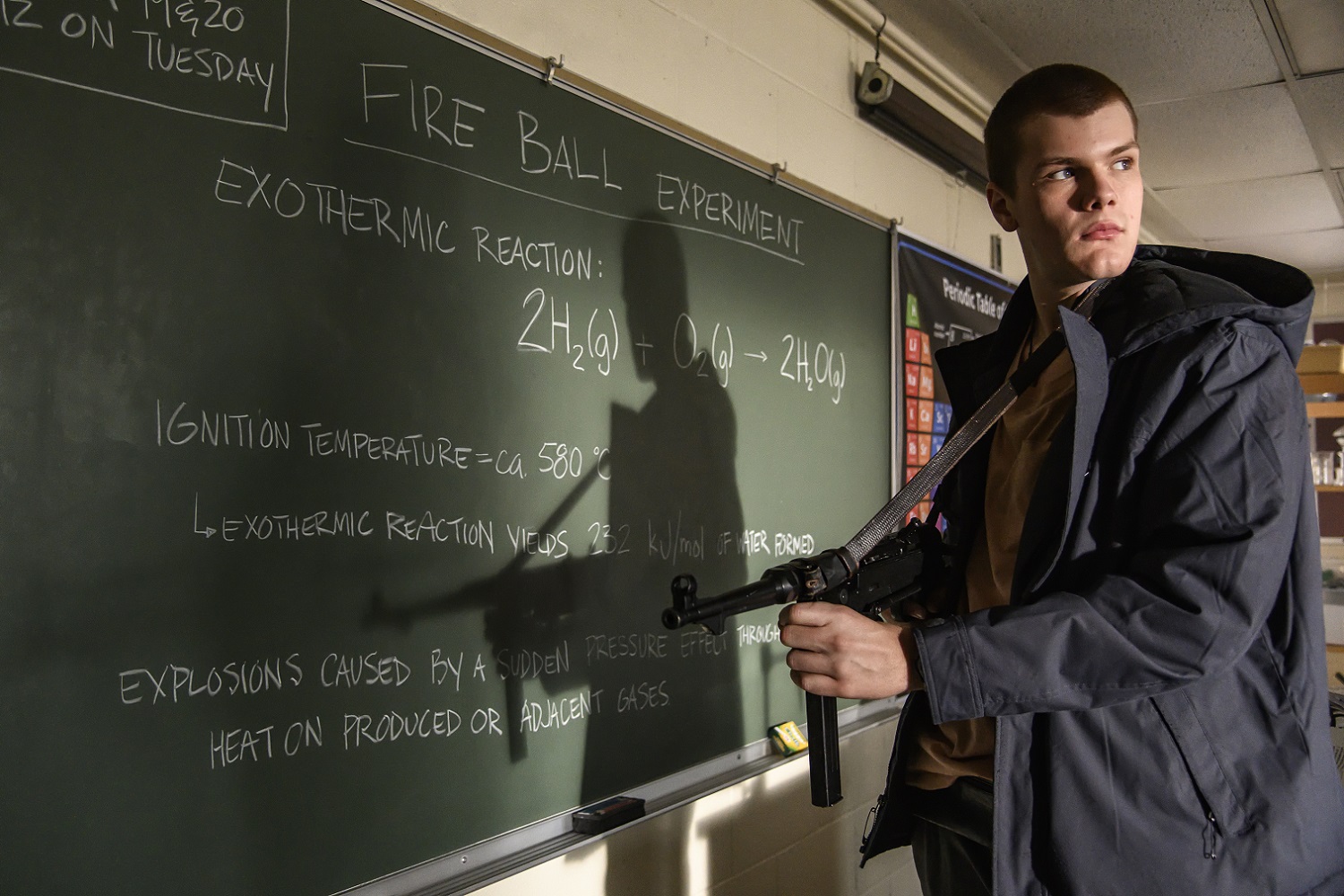
The post Run Hide Fight: Two-Toned, by Tyler Smith appeared first on Battleship Pretension.
At the core of Run Hide Fight is an experiment. Not one of form, but of concept. In it, director Kyle Rankin combines the sleek, pulse-pounding action of Die Hard with the gritty, disturbing violence of a school shooting film, hoping to create a harrowing thriller, made all the more impactful by its cultural relevance .
The story involves a high school student named Zoe (Isabel May), whose widower father (Thomas Jane) has taught her the ways of survival, likely as a way to cope with what he has lost. Zoe’s lessons are put to the test as a small group of her fellow students pull out guns at school and begin shooting up the place. This isn’t some random shooting, however, as leader of the shooters, Tristan (Eli Brown), holds the surviving students and faculty hostage, demanding maximum media coverage of the grisly event. Zoe eludes the attackers and begins to pick them off, one by one.
There are many reasons to think that the combination of these elements could work. The question beneath films like Die Hard and Speed often seems to be, “What would I do if I were in that situation?” It’s a fun scenario to put ourselves in. On the other hand, with the prevalence of school shootings in the last two decades, Americans have likely asked that exact same question, though perhaps with a tone more of dread than excitement. Given this bit of commonality, it might seem in the abstract that a film like Run Hide Fight could be very effective. And, yet, despite some sturdy filmmaking and reliable acting, the film never quite comes together.
There’s just something off about the realization of this experiment. It all just feels wrong. Not necessarily morally wrong, though some might argue that trying to mine the horrors we see on the news into an entertaining trifle is inherently distasteful. No, this film is wrong in a much more abstract way. Despite a consistency in style, the film just seems to be at war with itself, like a body rejecting an organ transplant.
Perhaps if the director had attempted to favor one element over another – either the slick action movie or the sobering drama – it might have worked better. Instead, Kyle Rankin attempts to balance these elements. But that only serves to disorient the viewer, as the assertion of each subgenre always seems to come out of nowhere. Take, for example, a scene in which Zoe dispatches one of her pursuers. As she examines the body, she finds some hand sanitizer in one of the shooter’s pockets. She indignantly quips, “Didn’t want to get your hands dirty, huh?”
That’s a one-liner. And, frankly, not a bad one. Were this a more conventional action film, it would fit right in. It belongs in the mouth of a world-weary cop trying to find hope in a hopeless situation. In the midst of a film featuring the brutal execution of children, however, it seems a bit tone deaf. The fact that this scene is cross-cut with another in which a female teacher is forced at knifepoint to strip naked in front of her class only underlines the way that the film’s engagement with the true ugliness of evil is in direct opposition to its desire to be an entertaining thrill ride.
The actors do what they can, with Isabel May grounding the film firmly in reality, even when it steers into Hollywood high-concept territory. Zoe’s fear turns to anger fairly quickly, but we are always firmly aware that underneath both is a deep mournfulness over the loss of her mother. May is a talented actress who, through sheer strength of will, almost manages to bring the conflicting elements of the writing together into a consistent character. That it never quite works is the fault of the screenplay, not of her acting. The rest of the cast is reliable, with veterans like Thomas Jane and Treat Williams turning in nicely-grizzled performances. As Tristan, the high-minded would-be philosopher of the group of shooters, Eli Brown is certainly engaging, though that may be due to his not-so-subtle channeling of Heath Ledger’s Joker, which eventually proves distracting.
In the end, Run Hide Fight is a fine movie that is completely undercut by its director’s attempt to bring together two tones that, it would seem, simply cannot work. We never feel like we’re watching a fully-realized film. Instead, it feels unnatural. Like trying to push two magnets together, the tonal elements here repel both each other and the audience.
The post Run Hide Fight: Two-Toned, by Tyler Smith appeared first on Battleship Pretension.


